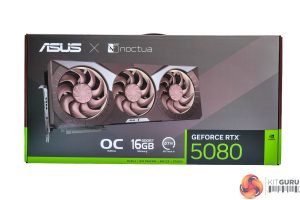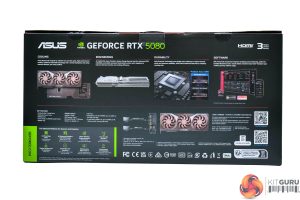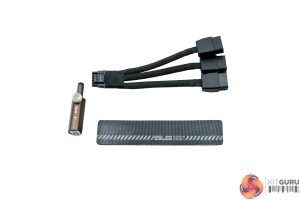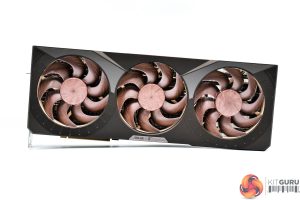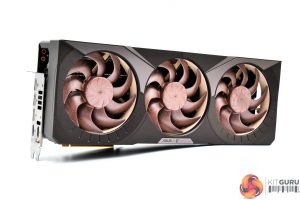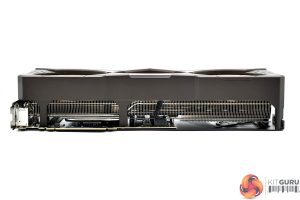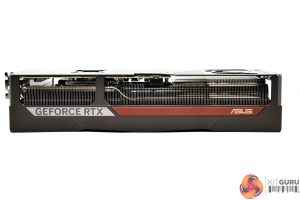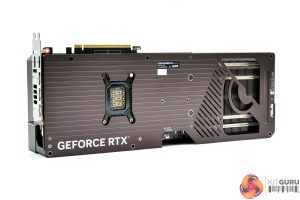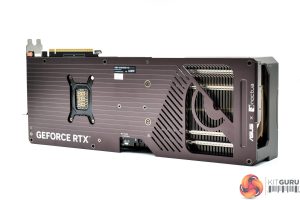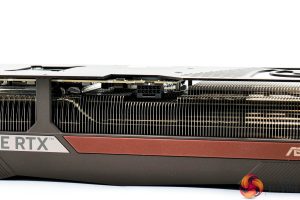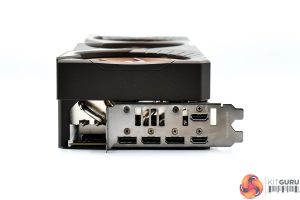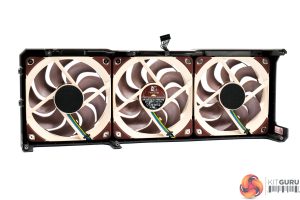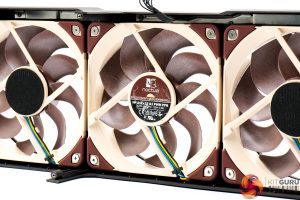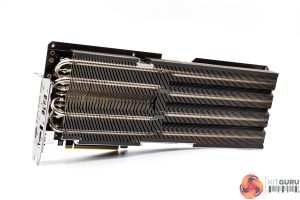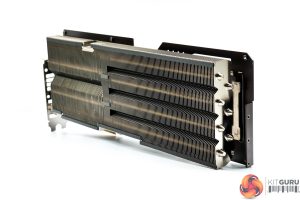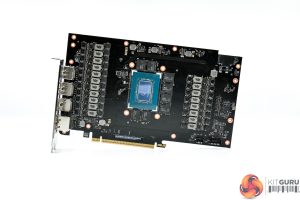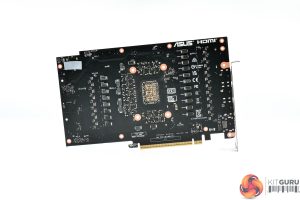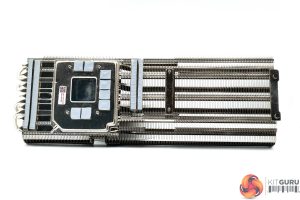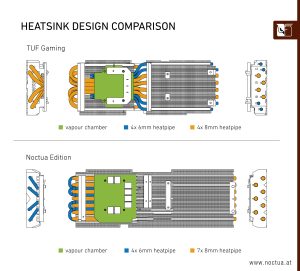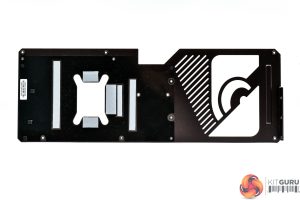The ASUS RTX 5080 Noctua Edition ships in a large brown box, complete with an image of the graphics card visible on the front, along with the ASUS and Noctua branding.
On the back, various key features of the card and cooler design are highlighted.
Inside, the accessory bundle consists of one small GPU holder, triple 8-pin to 12VHPWR adapter, plus a single velcro cable tie. The graphics card is obviously the main event, but considering this is a very premium RTX 5080, and a special edition collaboration with Noctua no less, it would have been nice to see a few unique extras in the box to add to that premium feel.
Then for what we are all here for – the card itself. It really is Noctua all over, with a brown shroud and the three 120mm NF-A12x25 G2 fans on show with the tan fan blades and beige frames. There's also a couple of grey strips in the shroud to help break things up a bit. I'm not really going to comment on the aesthetics themselves – you'll probably love it or hate it, but safe to say Noctua has enough supporters of its iconic colour theme, so I am sure plenty of people would love to have this card in their systems.
We can't go any further without discussing the sheer size of this graphics card though, as it is an absolute monster. It measures in at 385 x 151 x 80 mm, so it's almost 40cm long (!) and as you can see in the video, there was not much room to spare installing it in our MSI MPG Gungnir 300R Airflow case. Its weight is also quite immense, tipping my scales at 2691g, compared to 1655g for the RTX 5080 FE, making this card over a kilogram heavier.
The backplate is made from metal and sports a deep brown colour, in keeping with the overall design. There's a relatively small cut-out for airflow towards the end of the card, too.
You will also note the dual-BIOS switch positioned in the middle, with an option for either the Quiet or Performance modes. Quiet is the default option here and the only difference is the fan curve, as both modes share the same power and clock speed targets.
Power is of course supplied by a single 12VHPWR connector, while display outputs consist of three DisplayPort 2.1 and two HDMI 2.1 connectors.
To get started on disassembly, the good news is that the fan shroud comes away first, so you can easily swap or replace a fan without removing the heatsink. As mentioned, Noctua's 120mm NF-A12x25 G2 PWM models are deployed here.
With the shroud removed, the heatsink is visible, still attached to the PCB, but we'll take a look at that in more detail shortly.
First, the PCB is using the same design as the ASUS TUF RTX 5080 model, and that's no bad thing considering it's packing in a 16-phase VRM for the GPU, controlled by a Monolithic Power Systems MP29816. The memory VRM is three-phase, this time controlled by a Monolithic UPI UP9529Q. Both GPU and memory use 50A Vishay SIC658A MOSFETs.
As for the heatsink itself, this is also based on the TUF model, but as you can see in the graphic kindly provided by Noctua, its cooling capabilities have been significantly enhanced. Not only does it now pack in eleven heatpipes, with 4x 6mm and 7x 8mm pipes, the heatsink itself is bigger, while the base plate has been expanded to help cool the memory modules too. And yes, it is also using a vapour chamber!
Last but not least, we can also note a number of thermal pads on the backplate which can help draw out some heat from the rear of the PCB.
 KitGuru KitGuru.net – Tech News | Hardware News | Hardware Reviews | IOS | Mobile | Gaming | Graphics Cards
KitGuru KitGuru.net – Tech News | Hardware News | Hardware Reviews | IOS | Mobile | Gaming | Graphics Cards


